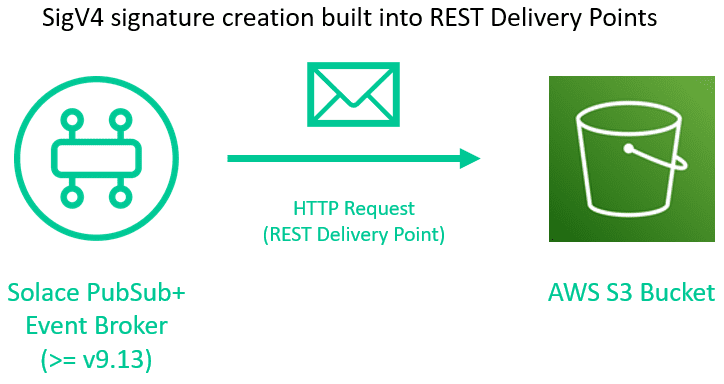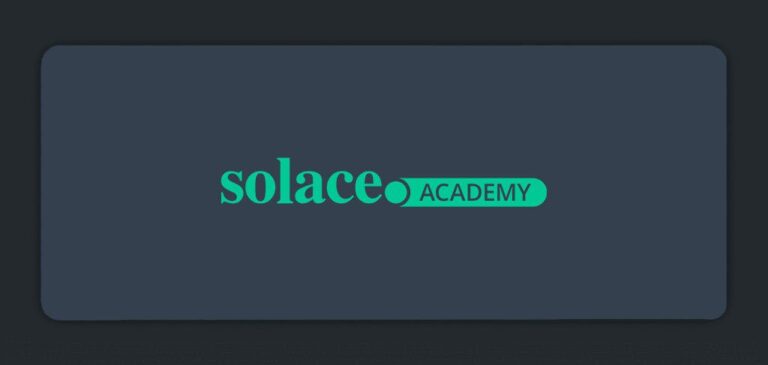February was a great month for Solace. With the release of Solace PubSub+ Version 9.13 we saw more support for REST delivery points and our continued integration with the Red Hat Ecosystem has helped our PubSub+ customers trust in our solution even more.
Sign up to Solace Academy to get access to our March 2022 Monthly Feature Highlight Training and read on to learn about the features you’ll be learning about.
AWS Authentication in REST Delivery Points
At Solace we’re constantly working to make sure all ecosystems are supported in as many features of the Solace PubSub+ Event Broker as possible. With the release of Solace PubSub+ v9.13 we’ve added support for the AWS Signature Version 4 (Sigv4) authentication standard for REST Delivery Points.
What is AWS Signature Version 4?
When interacting with AWS APIs via HTTP, most requests (if not all) need to be “signed” to authenticate the sender of the request. Signing a request is typically a 4 step process:
-
Create a canonical version of the HTTP request being made. This is a string formatted with the HTTP method, URI, query string parameters, headers and body properly separated by new line characters. This string is then hashed to create a unique value.
-
Create a second string that consists of the name of the hashing algorithm used, the request date and time, the credential scope, and the hashed string created in step 1 –all separated by newline characters.
-
Create a key to hash the string created in step 2. This is created by using your AWS access key secret and the HMAC hashing algorithm to hash the current date. That value is used to hash the name of the AWS region the request is being sent to. The new value is used to hash the name of the service the request is being sent to and, finally, that value is used to hash the string “aws4_request”. Once you have this final value you use it to hash the string created in step 2.
-
Add the signature created in step 3 to the Authorization header.
Detailed information about this process can be found in the AWS documentation.
Why add AWS Authentication to REST Delivery Points?
In previous versions of PubSub+ Event Broker (before v9.13) there wasn’t a way to directly use a REST delivery point to interact with AWS APIs. For example, if you wanted to create a backup of a queue of messages in an AWS S3 bucket, previously you would need to create an intermediate application that would need to bind to that queue in the broker, receive the messages, generate SigV4 signatures using the process above, and make the request to the AWS API.
In v9.13 we introduced the capability to configure your REST delivery point to authenticate using AWS authentication. After setting up the authentication parameters either in the Broker Manager or with the Solace CLI, you can have your REST delivery point send messages directly to the AWS S3 service to store these messages.
What will I learn in training?
In the March 2022 Monthly Feature Highlight training you will learn how to set up AWS Authentication for a REST Consumer using both the Broker Manager as well as the Solace CLI.
PubSub+ Certified in the Red Hat Ecosystem Catalog
Red Hat has become an important environment for Solace customers. More and more we are seeing our clients use Red Hat as their underlying technology when implementing a PubSub+ event broker, so it’s important to us that customers trust the PubSub+ event broker on Red Hat technology, which is why the PubSub+ event broker is now part of the Red Hat Certified Catalog.
What is the Red Hat Ecosystem Catalog?
The Red Hat Ecosystem Catalog is the official source for discovering and learning more about the Red Hat ecosystem of both Red Hat and certified third-party products and services. There are 3 main categories that belong to the Red Hat Ecosystem Catalog: certified hardware, certified software, and certified cloud and system providers.
Hardware inside the Red Hat Ecosystem Catalog consists of servers, workstations, individual components like storage and networking hard and edge systems. This hardware has all been tested and verified to work with Red Hat platforms and technologies and is fully supported by their creators.
Certified cloud and system providers are providers that offer public, trusted clouds to run your application on Red Hat platforms.
Certified software inside the Red Hat Ecosystem Catalog is software that has been rigorously tested and verified to work on Red Hat platforms and technologies and is fully supported by their provider.
Why is Solace in the Red Hat Ecosystem Catalog?
The Red Hat Ecosystem Catalog is a central repository of resources built and tested to exacting standards. There was a long, rigorous and continuing certification process for the Solace PubSub+ Event Broker to become a part of the catalog. We felt this was important so that when a customer wants to implement our broker, they will be ready to deploy with confidence that not only will the event broker work properly with their Red Hat environment, but the broker is fully supported by Solace while maintaining their relationship with Red Hat’s global support services.
What will I learn in training?
In the March 2022 Monthly Feature Highlight Training you will learn how to deploy a Solace PubSub+ broker in Red Hat OpenShift using the certified Helm Charts in the Red Hat Developer Catalog.

 Rey Riel
Rey Riel



